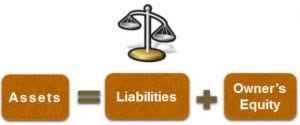
For example, a bakery company may need to take out a $100,000
loan to continue business operations. Terms of the loan require equal annual
principal repayments of $10,000 for the next ten years. Even though the
overall $100,000 note payable is considered long term, the $10,000
required repayment during the company’s operating cycle is
considered current (short term). This means $10,000 would be
classified as the current portion of a noncurrent note payable, and
the remaining $90,000 would remain a noncurrent note payable. Because part of the service will be provided in 2019
and the rest in 2020, we need to be careful to keep the recognition
of revenue in its proper period.
A note payable has written contractual terms that make it available to sell to another party. The principal on a note refers to is unearned revenue a current liability the initial borrowed amount, not including interest. Interest is a monetary incentive to the lender, which justifies loan risk.
What Is Unearned Revenue and How to Account for It
Common examples include subscription-based services, prepaid insurance policies, and advance ticket sales. As the company delivers the goods or services over time, it gradually recognizes the unearned revenue as earned revenue on the income statement. Unearned revenue, also known as deferred revenue or customer deposits, refers to payments received by a company for products or services that have not yet been delivered or rendered. This unique financial concept holds a notable position on a company’s balance sheet, as it has implications for both revenue recognition and the company’s liabilities. By understanding and properly accounting for unearned revenue, businesses can maintain accurate financial records and ensure that their financial statements reflect their true financial position. Properly managing unearned revenue is crucial for industries such as software or subscription-based services where prepayments are the norm.
- The entry above records the initial payment of the second group of subscriptions.
- Unearned revenue is common for sellers with services and subscription models.
- The personal trainers enters $2000 as a debit to cash and $2000 as a credit to unearned revenue.
- Interest accrued is recorded in Interest Payable (a credit) and
Interest Expense (a debit). - The increase in unearned revenue will make the organization appear less liquid.
- Baremetrics makes it easy to collect and visualize all of your sales data so that you always know how much cash you have on hand, which clients have paid, and who you still owe services to.
Unearned revenue is only recorded when a seller follows accrual accounting. In cash accounting, the seller will only record an advance payment for an order rather than recording two entries in the journal. And since unearned revenue records services yet to be provided to clients who have paid for them in advance, it counts as a current liability for the business.
How Does Unearned Revenue Work?
Interest is an expense that you might pay for the use of someone else’s money. Assuming that you owe $400, your interest charge for the month would be $400 × 1.5%, or $6.00. To pay your balance due on your monthly statement would require $406 (the $400 balance due plus the $6 interest expense). Another way to think about burn rate is as the amount of cash a company uses that exceeds the amount of cash created by the company’s business operations. The burn rate helps indicate how quickly a company is using its cash.







No Response to "What Is Unearned Revenue?"